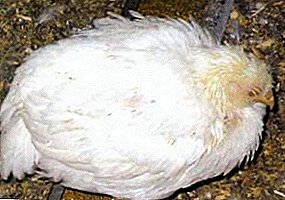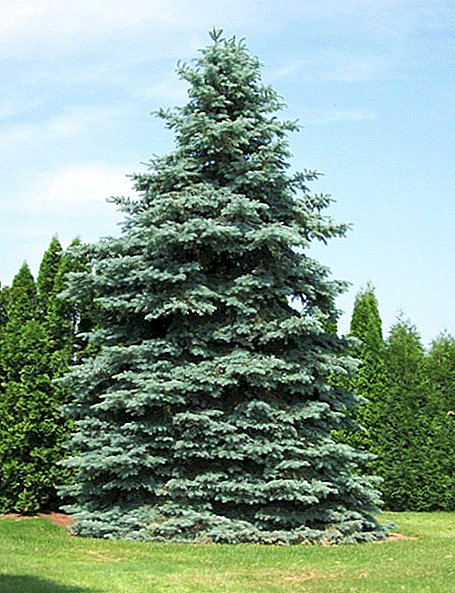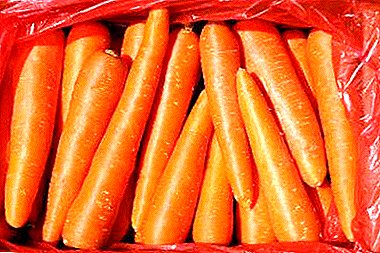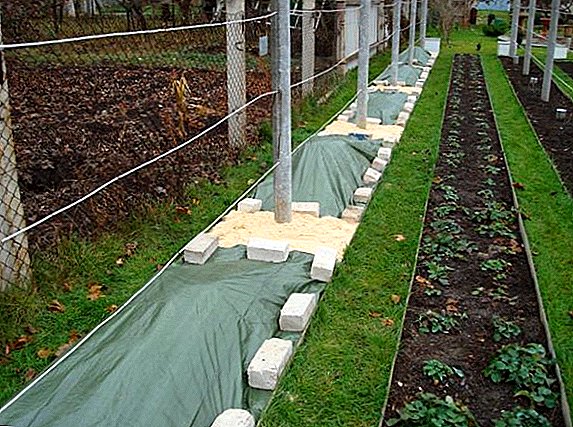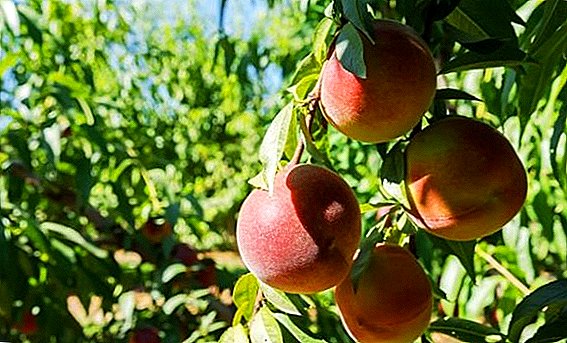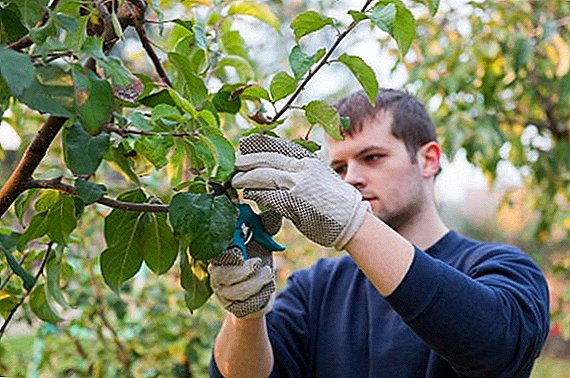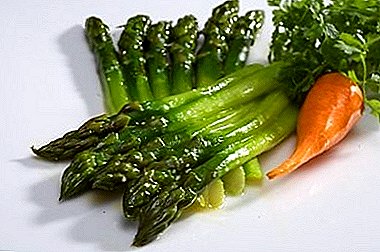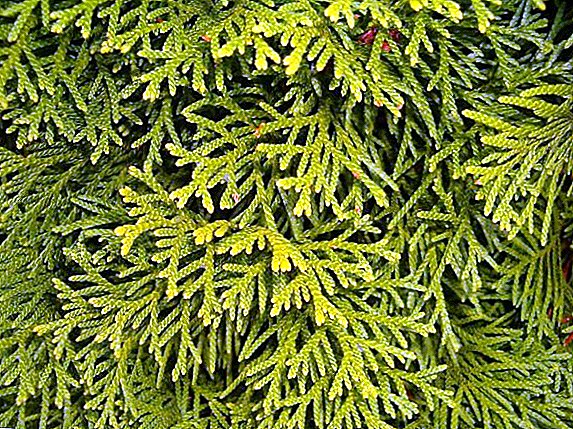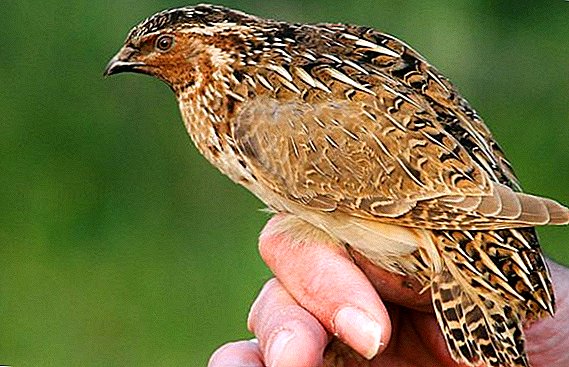 Quail ordinary (or wild) is significantly different from many of their "home" relatives and, above all, the ability to fly. This is a very interesting bird, watching which you can learn a lot. If this is not possible, then we suggest that you read the following information about it.
Quail ordinary (or wild) is significantly different from many of their "home" relatives and, above all, the ability to fly. This is a very interesting bird, watching which you can learn a lot. If this is not possible, then we suggest that you read the following information about it.
Description and appearance
Ordinary quails belong to the subfamily of the grouse, the order of the chicken-like, and have similar external features with them. The average body weight of one bird is 100-150 g, with a body length of 16-20 cm. The wings are rather long and have a span of 32-35 cm. The tail is small, almost imperceptible.  The color of the plumage of ordinary quail is very peculiar, but on the whole it is dominated by yellowish-brown colors. Such is the upper part of the bird's body, but sometimes there are additions in the form of ocher blotches and black spots. The crown on the head is darker, with a slightly noticeable brown tinge, and along it passes several ocher streaks. On the head of birds, brown eyes and a small neat brown beak are located (sometimes it may have a light color).
The color of the plumage of ordinary quail is very peculiar, but on the whole it is dominated by yellowish-brown colors. Such is the upper part of the bird's body, but sometimes there are additions in the form of ocher blotches and black spots. The crown on the head is darker, with a slightly noticeable brown tinge, and along it passes several ocher streaks. On the head of birds, brown eyes and a small neat brown beak are located (sometimes it may have a light color).
Did you know? The first wild quails were domesticated in the warm regions of Asia, from where they came to America, and then spread throughout Europe. Modern Japanese quail (it is often bred at home) is a distant relative of the Asian quail, and the Japanese started its mass breeding only at the beginning of the 20th century.
In males, the dark color of feathers is noted on the throat, cheeks and chin, while in females these zones are much lighter. The goiter of males is fiery-red, which allows them to attract the attention of young ladies who do not need such bright coloring.  The abdomen is much lighter than the dorsal part, and black, white or brown patches are easily visible on the surface of the feathers. Such a specific color allows wild quail to survive, because merging with the surface of the earth, they become almost invisible to predators and hunters.
The abdomen is much lighter than the dorsal part, and black, white or brown patches are easily visible on the surface of the feathers. Such a specific color allows wild quail to survive, because merging with the surface of the earth, they become almost invisible to predators and hunters.
The paws are relatively short but widely spaced, which allows the bird to very quickly move around the soil surface in case of danger. Despite the ability to fly, wild quails spend most of their lives in rushes.
Read also about other species and breeds of quail: Chinese painted, Manchu golden, Estonian.
Where ordinary quail dwells
Quail is common in many countries Europe, Africa and Western Asia. On the Russian lands, hunting for him is conducted in the east, where he lives both on flat terrain and in the mountains. The wintering place of these small birds is the warm African continent and the territory of Western Asia. The flight to the southern countries is celebrated in early April, and birds fly to the northern edges only in early May.  Birds feel good in open flat areas with high shoots, pastures or floodplain meadows, up to 2 thousand meters high.
Birds feel good in open flat areas with high shoots, pastures or floodplain meadows, up to 2 thousand meters high.
Did you know? Quails have already managed to go into space, and this happened back in 1990, when chicks of this bird hatched at the Mir space station. Naturally, the growth of young stock was carried out in specially adapted incubators.
Lifestyle
Moving closer to the nesting area of their habitat, the birds choose areas unsuitable for agriculture, where there is plenty of space for running and there is no need to constantly take off (they do not like this). Birds spend their entire day in high grass thickets, getting food for themselves, and if they interfere with their measured rhythm of life, the disturbed bird will immediately stop on the spot, trying to merge as much as possible with its surroundings. When approaching a person quickly takes off and flies away.  At night, wild quails climb into the grass or under the razgie bushes, hiding in them in small flocks. So they can warm each other and not freeze even in the coldest days of the season.
At night, wild quails climb into the grass or under the razgie bushes, hiding in them in small flocks. So they can warm each other and not freeze even in the coldest days of the season.
There are a lot of natural enemies in wild quails: from foxes and ferrets to snakes, weasels and various feathered predators. In addition, in many countries birds are hunted, and they are forced to flee from humans. Departure to the warm edges occurs in September, but the last birds leave their homes only in November. Quail flocks move at night, and in the daytime they descend to the ground and hide in high thickets of bushes.
Find out what is useful, how to check for freshness and quickly break quail eggs, as well as how many eggs a quail carries.
What eats ordinary quail
Up to 48% of feed in the diet of quail ordinary - animal food. In the first days of life, these are small insects, worms and other invertebrates, but with age, the older chicks begin to eat more vegetation: leaves and shoots, and then seeds and seeds.  The basis of the diet at this age is weed seeds, and flower buds, leaflets and berries that birds either pluck from the bushes, or pick up from the soil, along with bugs or other invertebrate animals, act as an additional source of all the substances needed by the bird.
The basis of the diet at this age is weed seeds, and flower buds, leaflets and berries that birds either pluck from the bushes, or pick up from the soil, along with bugs or other invertebrate animals, act as an additional source of all the substances needed by the bird.
Important! If the quail came to you directly from the wild, the first time their diet should be as close as possible to the usual, including insects and plant seeds. Poultry products are gradually transferred to animal feed and other habitual homes.
Breeding
Quail - one of the last birds that spring back to the usual nesting sites (around the end of April or early May). They do not create permanent pairs, so the males mate with any female, of course, first winning her from a competitor. In the midst of the marriage period, quails emit loud, repetitive sounds around the clock, reminiscent of "weep." On them quails also respond, which further arrange nests in deepenings of the soil.  Careful moms lining the bottom of the pits with dry grass and sometimes their own feathers. From 8 to 20 brownish testicles, with black patches on the shell surface are placed in one nest. The process of incubation of chicks lasts 15-17 days, and the countdown starts from the last egg that was laid. Fathers do not take part in hatching or further rearing of young stock, and as soon as the “newborns” dry out a bit (they hatch out of densely pubescent eggs), they leave the nest with their mother.
Careful moms lining the bottom of the pits with dry grass and sometimes their own feathers. From 8 to 20 brownish testicles, with black patches on the shell surface are placed in one nest. The process of incubation of chicks lasts 15-17 days, and the countdown starts from the last egg that was laid. Fathers do not take part in hatching or further rearing of young stock, and as soon as the “newborns” dry out a bit (they hatch out of densely pubescent eggs), they leave the nest with their mother.  Already in the first days of its existence, the reddish-ocher chicks of common quail are very active. If you're lucky, you can watch the striped backs crawling in the grass, trying to keep up with mom. The weight of a single newly hatched wild chick is somewhat less than that of domestic breeding cubs (approximately 5.5 g), but already in 35-40 days of life these birds reach “adult” sizes.
Already in the first days of its existence, the reddish-ocher chicks of common quail are very active. If you're lucky, you can watch the striped backs crawling in the grass, trying to keep up with mom. The weight of a single newly hatched wild chick is somewhat less than that of domestic breeding cubs (approximately 5.5 g), but already in 35-40 days of life these birds reach “adult” sizes.
Is it possible to keep in captivity
Quail ordinary feels pretty good in captivity, of course, if you create all the necessary conditions for it to fully live. In large cages or in fenced areas, wild individuals behave in the same way as in open areas in the usual conditions of their life. Due to this, it is possible to study well all the habits and habits of birds.
Learn more about the content of laying quails at home.
When kept in a cage, in its upper part it is imperative pull soft ceilingso that when jumping (wild quails bounce when they get scared) the birds do not injure themselves about hard wire or hard ceiling.
Feeding in captivity should include the same food to which the birds are accustomed in the wild, but in addition you can give bread, grains and greens gathered in the yard. In addition, quails are very fond of sand baths, so you should put a tank with sand in a cage.
Video: ordinary quail
Despite the fact that quail can easily live in captivity, for breeding birds for eggs or meat, it is desirable to consider specially bred for this breed, which are characterized by high productivity indices. Wild birds do not always meet the requirements of the breeder, so it is better to just watch them in their usual living conditions.


